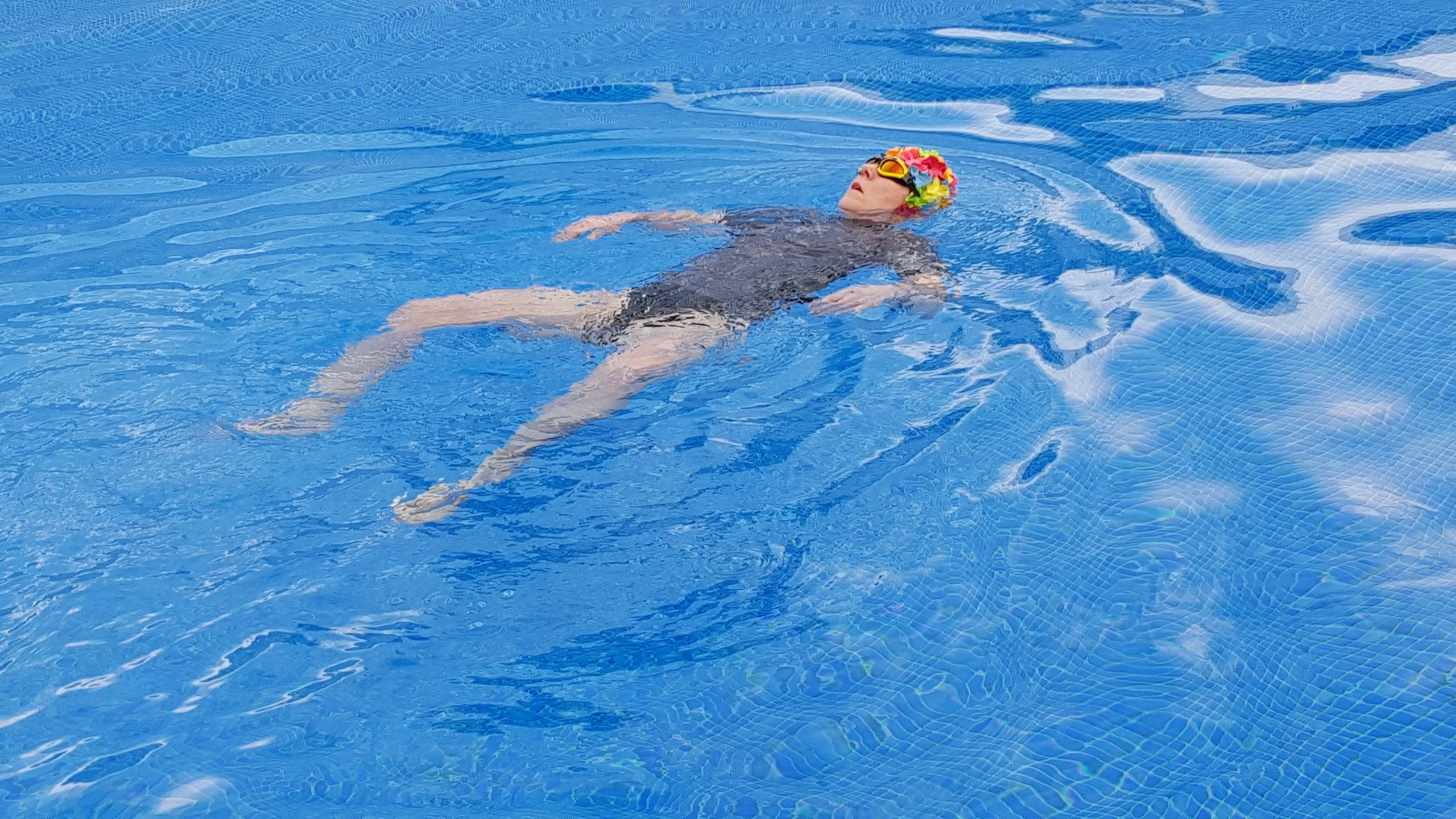I went for a lane swim this morning.
I thought I’d take some full, deep breaths before each length and then, if I needed to come up for air, do some very gentle nose breathing.
A couple of deep breaths through my nose easily gave me half a length. When I needed air, I took a few slow, gentle breaths through my nose.
So resting for a breather rather than coming up for a breath. No gasping.
Front crawl for half a length rolling on to the back for a breather, letting air in only through the nose.
Breaststroke for half a length before rolling either on to the back or swimming with the face out for a few moments, again letting air in only through the nose.
It worked very well. If you’re swimming for exercise in a pool, it’s a great way to prevent harmful strain.
It is a gift of swimming that you can keep moving for a long time with your face underwater, relaxing your neck. When I swim the strokes following the convention of moving my head to breathe every three strokes in crawl, or every one in breaststroke, I can’t be confident that I’m not doing myself some kind of harm. I feel it in my neck and head. But when I follow my own rules of spending more time underwater and coming up for a breather when I need to, letting air in only through my nose, everything seems much calmer.
When I glance around the pool, almost everyone I see, in all three lanes, is struggling in some way with breathing, whether they’re aware of it or not.
Trying to execute a stroke around frequent, quick breaths like an Olympic swimmer, or doing breaststroke with the head held out of the water, tend to put the recreational swimmer wrong.
We can make it much easier for ourselves by spending more time underwater with a relaxed neck and coming out less frequently, for a gentle breather.


